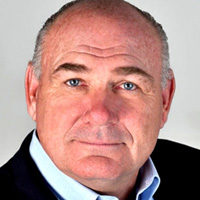Making Digital Subchannels New Again

While digital subchannels have been around for more than 10 years, they’ve recently increased in popularity with several multicast networks launched just last year including Tegna’s Twist, E.W Scripps’ Doozy and Defy TV, Nexstar’s Rewind TV and Nexstar and SportsGrid Inc.’s SportsGrid Network.
Multicast networks can offer a targeted demographic that potentially generates increased revenue and stems the tide of cord cutters. Content that draws an audience will also attract advertisers, particularly when the demographic is clearly defined and fits the advertiser’s target market.
While multicast networks have typically featured classic TV series and movies, several have ventured out to include original programming and live news and event coverage.
Multicast Networks Expand Into Original And Live Content
SportsGrid Network is the country’s first 24-hour network for sports betting and fantasy sports fans. It provides real-time sports news, statistics, odds and live expert analysis and commentary. Katz Broadcasting’s Bounce TV features a mixture of archived programming and original shows aimed at the African American community. Scripps’ Newsy expanded its programming and distribution model last year and is a free, 24-hour news service available for television and streaming. Tegna’s Twist is a female-oriented multicast with shows revolving around food, home and reality content. Two multicast networks with original and live coverage that have attracted considerable viewership recently are Court TV and WeatherNation TV.
While the list of multicast networks is far too large to list, many U.S. broadcasters have launched multicast networks, including Sinclair, NBC, CBS, Allen Media Group, Weigel Broadcasting and Freemantle Media North America. Multicast networks are available in well over half the country, with some reaching upwards of 90% of all U.S. TV homes.
What’s New Now?
Some of the increased popularity could also be due to new technology that can optimize this programming and increase a station or network’s return on investment. There are a lot of advances that simply did not exist when the digital broadcasting mandate went into effect back in June 2009.
Digital transmitters, for one, now come equipped with subchannels. Newer models allow delivery of more subchannels than previously possible. Call letter stations want to add to their programming, but at the same time, streamline the cost of creating and maintaining these new channels. More efficient playout options are available. And they come at a far lower cost than what is typically spent on a primary channel.
When launching subchannels, broadcasters should explore alternative playout technology that offers the same quality and often additional features without the sticker shock. It’s important to look for systems that easily fit within an existing workflow.
Some of the functions today’s systems provide include include the ability to interface with the facility’s intranet, trafficking systems and EAS protocol; capability to receive and send SCTE commands; to up and down convert commercials and program files in real-time; provide real-time audio leveling and include built-in graphic overlays. Advertising can also be handled now through playout with systems that can send reconciliation files back to trafficking.
Installing a standalone server that interfaces with the intranet and provides all of the above makes set up for one or several subchannels a breeze. If the secondary channels are not generating as much revenue as the primary channel, why should the costs incurred be the same?
The ability to create targeted programming channels combined with technology advances that make it possible to go on air in a highly efficient way, point to the continued growth of subchannels in the U.S. broadcast industry.
Van Duke is U.S. director of operations at PlayBox Neo.
































Comments (0)